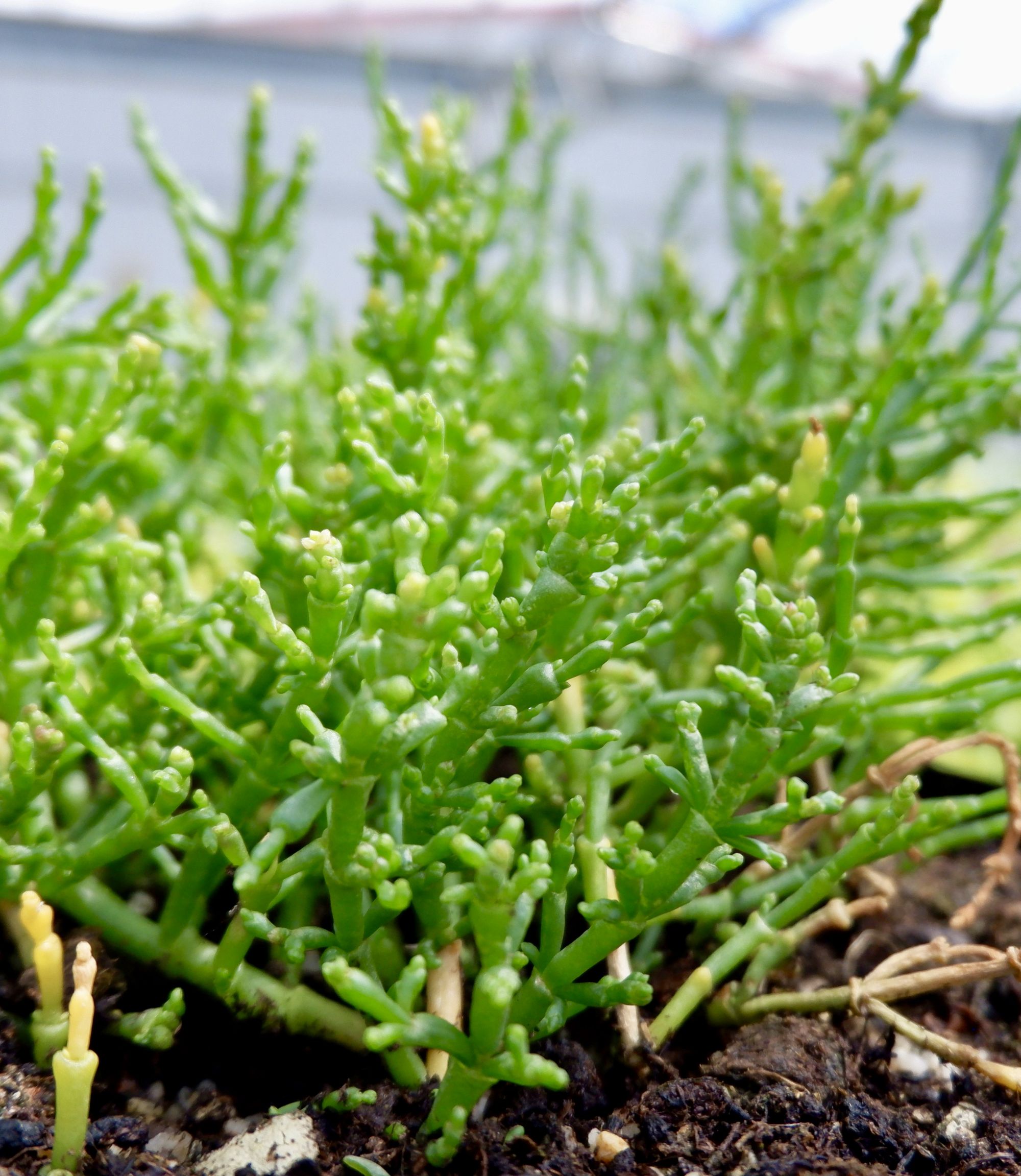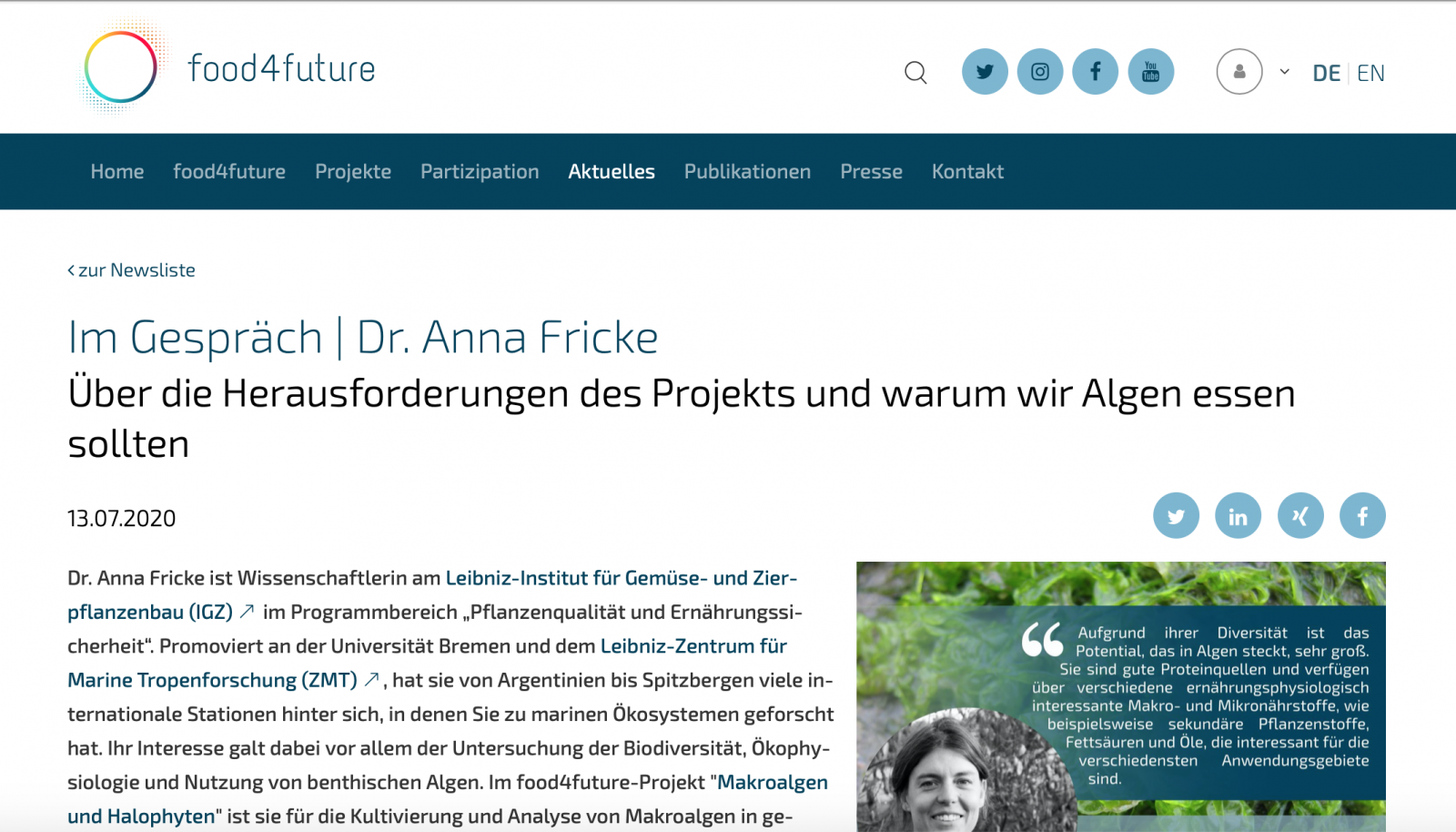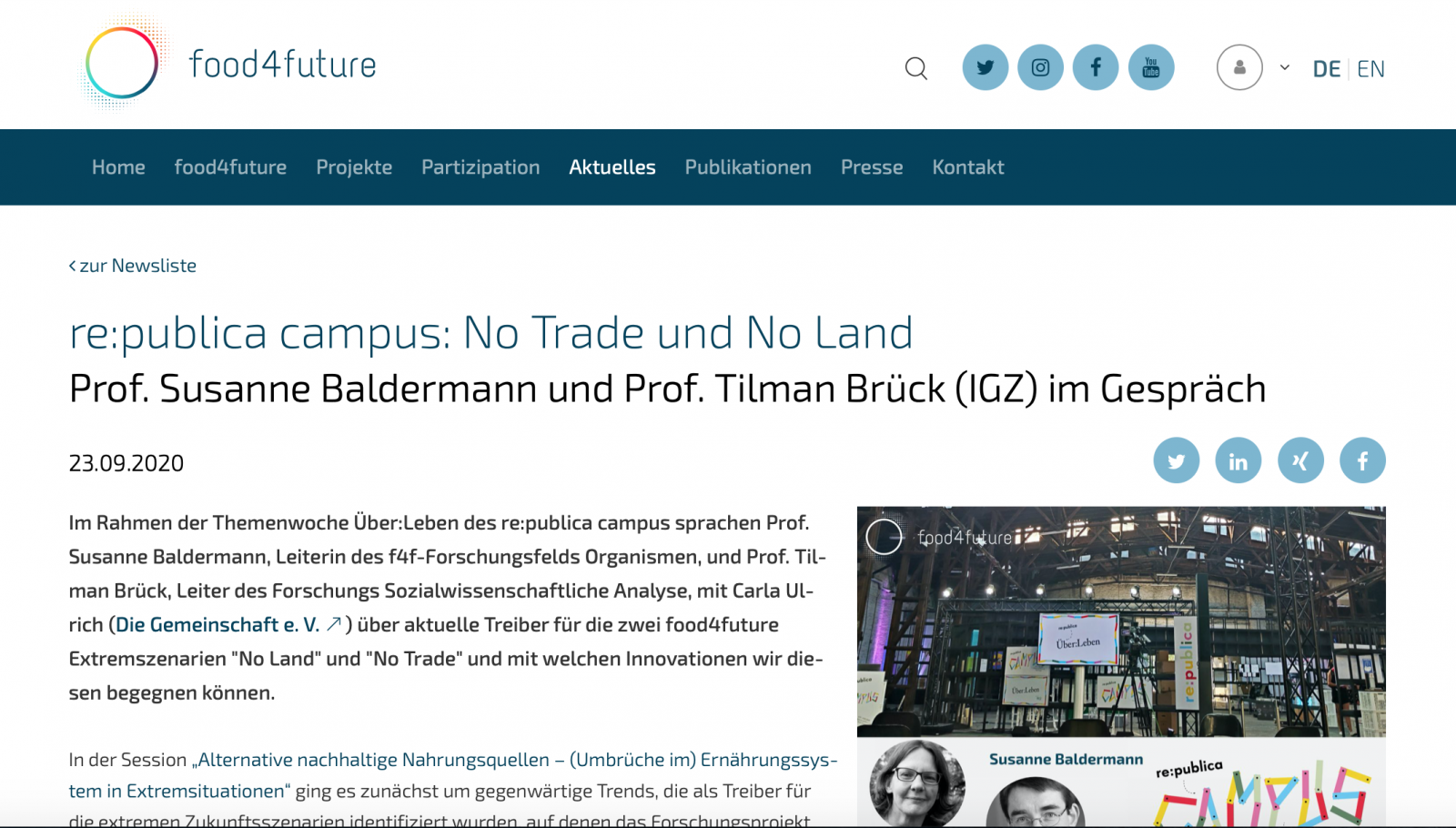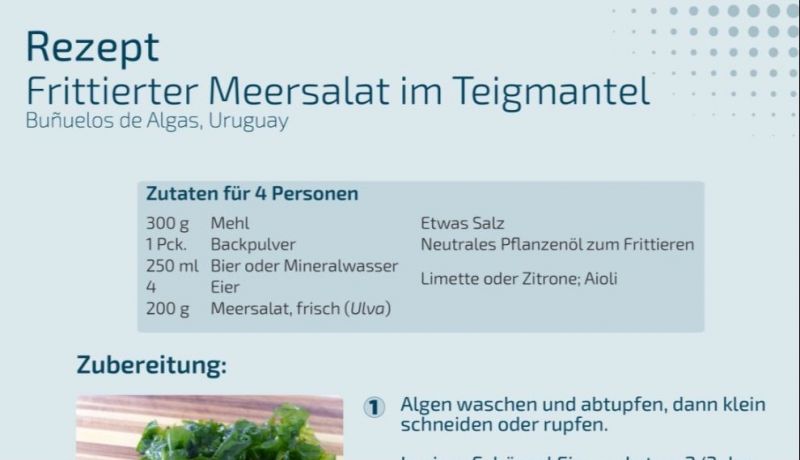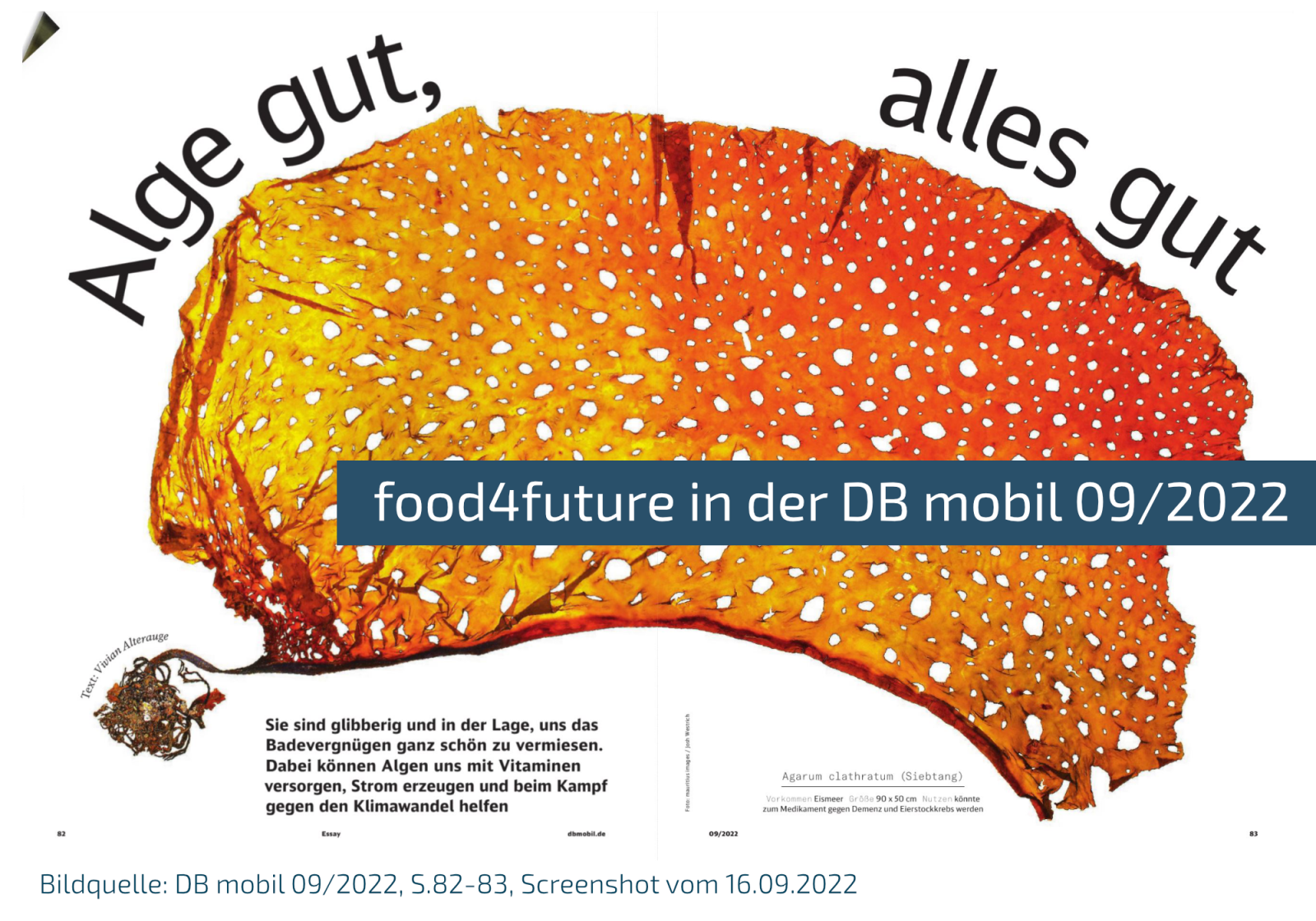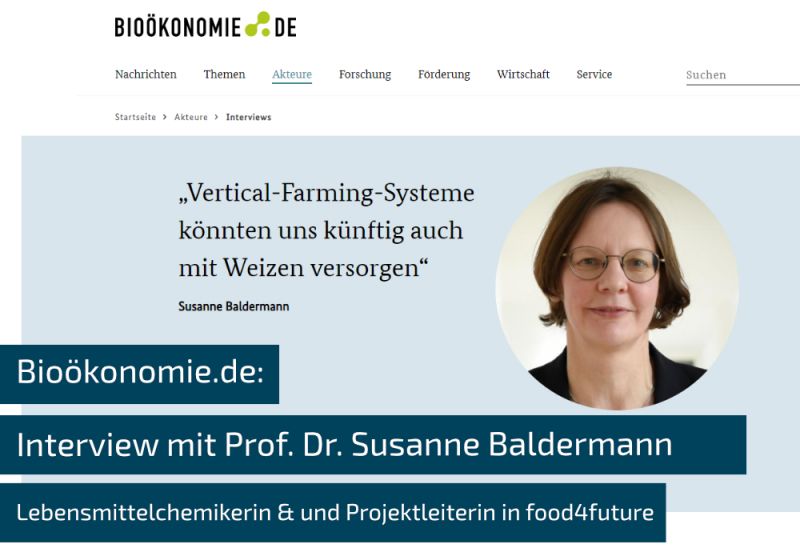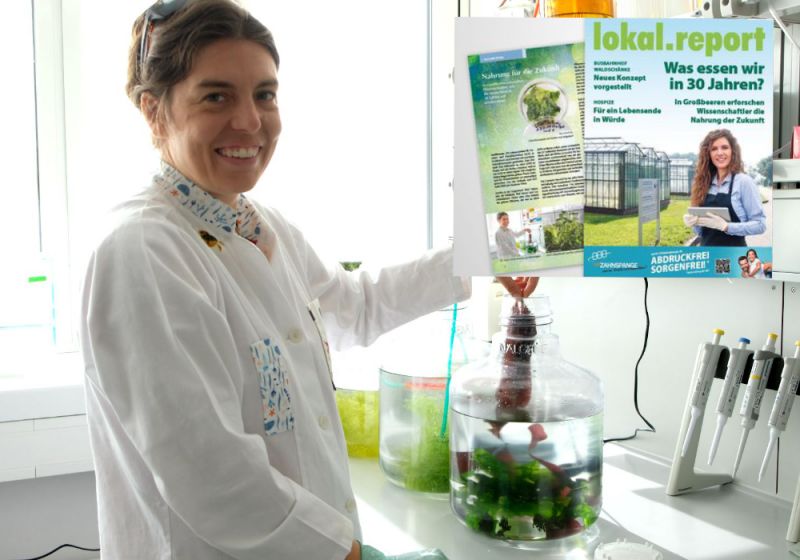European samphire (Salicornia eropaea) is a halophyte. (Photo: M. Fitzner, IGZ)
Halophytes, salt-tolerant plants such as the European samphire (Salicornia europaea), are increasingly becoming the focus of research in the face of global challenges such as freshwater scarcity and soil salinization. With their ability to thrive in saline soils, halophytes offer innovative approaches for the nutrition of the future. As part of the second funding phase of “food4future”, intensive work is being carried out on the cultivation and use of these plants. A central focus is on the selection of suitable halophyte species with high nutritional value. Species such as green garden milkweed, sea fennel, purslane and sea kale are being examined for their nutrient profiles and cultivated under controlled conditions. Particular attention is paid to growth conditions and the stability of yields and nutrient profiles in order to establish halophytes as a reliable source of nutrition.
An urban, saline indoor cultivation system for saline food sources was developed to produce these salt plants in urban areas. Based on this prototype, further pilot plants are being developed, for example a cellar plant in the urban cellar system of the city of Kulmbach. This pilot plant simulates realistic conditions for large-scale cultivation. Modern technologies such as UVB LEDs are used to specifically promote plant growth. Circulatory approaches are also being investigated: residual materials such as waste water from fish farming and recycled fertilizers are integrated into the cultivation process as sources of nutrients. In addition to cultivation technology, this f4f project is also dedicated to further processing and product development. Valuable macro- and micronutrients are extracted from the halophytes using innovative fermentation and energy-efficient extraction processes. These enable the production of healthy and sustainable food prototypes such as fermented snacks or new types of drinks. At the same time, these processing methods help to minimize the environmental impact of processing.
Halophytes are a key resource for the sustainable transformation of agriculture and food production. They not only offer solutions for cultivation on saline soils, but also new approaches for urban agricultural systems. Together with f4f partners from science and industry, this f4f project focuses on the comprehensive research and use of these plants in order to fully exploit their potential as an innovative and environmentally friendly source of food.
Text: S. Baldermann, Uni Bayreuth
Contact us
Universität Bayreuth
Universitätsstraße 30
95447 Bayreuth
Website
www.uni-bayreuth.de/
Project duration
Oktober 2024 - September 2024
Interaction with f4f & associated partners
IGZ, ATB, ZMT, Brandenburger Seefisch (in Gründung), Stadt Kulmbach, THW/PYCO, RUN, Elea Technology GmbH

Prof. Dr. Susanne Baldermann
Project manager
susanne.baldermann@uni-bayreuth.de
T +49 (0) 33701 78 241
Prof. Dr. Susanne Baldermann heads the “Food Chemistry and Nutrition” working group in the “Plant Quality and Food Security” program area at the Leibniz Institute of Vegetable and Ornamental Crops (IGZ). She is associated with the Institute of Nutritional Science, Chair of Food Chemistry at the University of Potsdam. Her scientific focus is on the analysis of secondary metabolism in plant foods and its significance for food quality. In food4future, she heads the research field “Organisms”.
Fricke A, Harbart V, Schreiner M, Baldermann S. (2023). A proof of concept for inland production of the “sea-vegetable” Ulva compressa in Brandenburg (Central Europe) using regional saline groundwater. (Algal Research).
doi10.1016/j.algal.2023.103226
Fitzner M, Schreiner M and Baldermann S. (2023) Comprehensive Characterization of selected phytochemicals and minerals of selected edible halophytes grown in saline indoor farming for future food production. Journal of Food Composition and Analysis
doi:10.1016/j.jfca.2023.105435
Fitzner M, Schreiner M, Baldermann S. (2023) The interaction of salinity and light regime modulates photosynthetic pigment content in edible halophytes in greenhouse and indoor farming. Frontiers in Plant Science.
doi:10.3389/fpls.2023.1105162
Fricke A., Psarianos M., Sabban J., Fitzner M., Reipsch R., Schlüter O.K., Dreyer C., Vogt J.H-M., Schreiner M. and Baldermann S. (2022) "Composite materials for innovative urban farming of alternative food sources (macroalgae and crickets). (Front. Sustain. Food Syst.)
doi:10.3389/fsufs.2022.1001769
Psarianos M., Fricke A., Ojha S., Baldermann S., Schreiner M., Schlüter O.K. (2022) Effect of Narrowband UV-B Irradiation on the Growth Performance of House Crickets (Foods)
doi.org:10.3390/foods11213487
Wikandari R., Manikharda, Baldermann S., Ningrum A. & Taherzadeh M. J (2021) Application of cell culture technology and genetic engineering for production of future foods and crop improvement to strengthen food security, Bioengineered, 12:2, 11305-11330,
doi:10.1080/21655979.2021.2003665
Fitzner M, Fricke A, Schreiner M, Baldermann S. (2021) Utilization of Regional Natural Brines for the Indoor Cultivation of Salicornia europaea. Sustainability. 13(21):12105.
doi:10.3390/su132112105
Bermejo R, Buschmann A, Capuzzo E, Cottier-Cook E, Fricke A, Hernández I, Hofman LC, Rereira R, van den Burg S, Grace M, Mukherjee N, Wendling L. (2022) Report: Macoralage cultivation and ecosystem services. Eklipse Expert Working Group Macroalgae.
Finaler Report (PDF)
